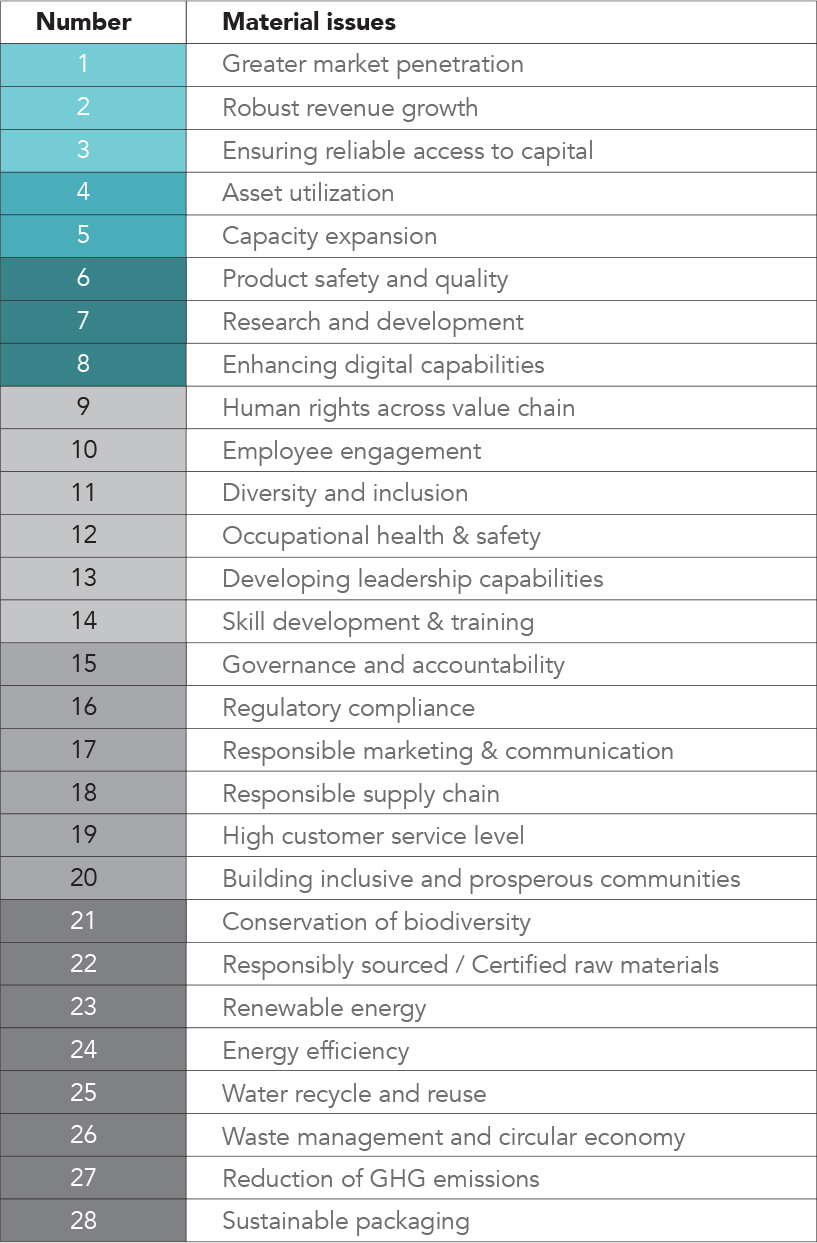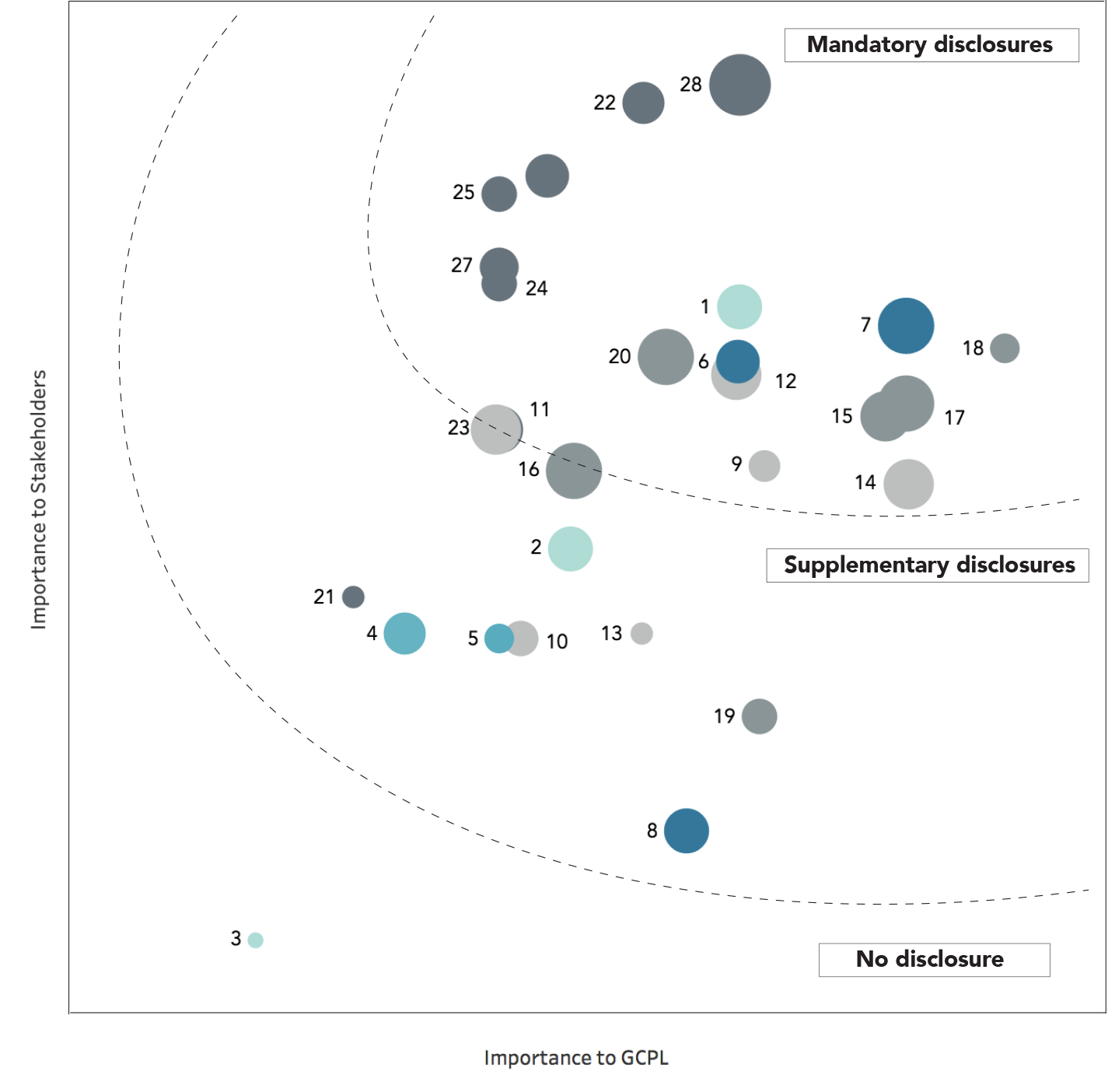Godrej Protekt mr. magic - a first of its kind powder-to-liquid handwash - is our innovative, sustainable new solution to cleaner hands
At Godrej Consumer Products Limited (GCPL), we have been publishing a statutory annual report, in line with the Securities and Exchange Board of India (SEBI) (Listing Obligations and Disclosure Requirements) Regulations, 2015; Companies Act, 2013; and Secretarial Standards. This is our second Annual and Integrated Report, aligned with the principles of the International Integrated Reporting Framework (referred to as the <IR> framework) developed by the International Integrated Reporting Council (IIRC). In addition, this report is aligned with the Global Reporting Initiative (GRI) standards required by the Sustainability Reporting Guidelines of GRI and the Business Responsibility Report (BRR) requirements of SEBI.
Content of the report
Through integrated reporting, we aim to share an overview of our financial and non-financial performance that has helped create short-term and long-term values for our stakeholders.
This report provides insights on:
Reporting period
All information, financial and non-financial, is reported for the period from April 1, 2019 to March 31, 2020. For our performance on sustainability, we have also incorporated comparative figures for the previous year (fiscal year 2019) and baseline year (fiscal year 2011, except for statutory financials) for a holistic overview.
Scope and boundary
This report is for GCPL, including GCPL manufacturing plants in India, Africa, Indonesia, Latin America, and USA. The data and content are consolidated for the business, unless otherwise specified.
Management committee
endorsement and assurance
The GCPL Management Committee remains committed to high levels of disclosure and transparency in communication with all stakeholders. The Committee has been involved in the process of drafting this report and fully endorses its contents.
Materiality
Approach to materiality
We approach materiality from a strategic and value-creation perspective. Material issues are identified by engaging in conversations with our stakeholders and monitoring broad trends in the industry. Performance on material issues forms the core content of this Annual and Integrated Report. In fiscal year 2020, we conducted an extensive materiality exercise, which involved engaging an external partner and enabling a thorough understanding of the relationship of the material issues with our business risks, objectives, and value creation. The process of determining materiality at GCPL is compliant with the prescriptions of the IIRC and draws from the six capitals of integrated reporting.
Methodology
Materiality analysis was performed through identification and prioritisation. A systematic step-wise process was followed. First, relevant insights were collected through primary and secondary research and, then, necessary calculations were performed to obtain the materiality matrix. Primary inputs were obtained through direct stakeholder engagement, through discussions on material issues with various stakeholder groups. Furthermore, surveys were conducted to reach out to employees and gather information at scale.
The secondary research primarily involved analysis of various sector trends, sustainability reports and select peer analysis. These aspects were further rated based on the level of importance ascertained by us and our stakeholders.
Overview of the methodology
|
Identify issues across six capitals
|
Engage with 450+ key stakeholders on material issues
|
Develop materiality matrix using specialised tool
|
Stakeholder engagement
Upon identifying a broad list of material issues, interactions were initiated with each key stakeholder group. Each material issue was assessed for its relative importance with respect to different stakeholder groups and aggregated. Stakeholder analysis was performed by identifying key stakeholders and administering tailored questionnaires to each of them.
To develop the materiality matrix, it was necessary to collate stakeholder responses. Because not all stakeholders are equally important in the organisational context, they were rated based on two parameters: ability to influence GCPL and extent of influence due to GCPL. Stakeholders were then assigned weightages on the basis of these two parameters.
Stakeholder prioritisation
|
Stakeholder Group |
Ability of stakeholder to strongly influence GCPL’s performance and operations |
Extent of influence on stakeholder due to GCPL’s performance and operations |
|---|---|---|
| Leadership Team | High | High |
| Employees | Medium | High |
| Suppliers | Medium | Medium |
| Distributors | Medium | Medium |
| Consumers | Medium | Medium |
| Investors | Medium | High |
| NGO Partners | Low | Medium |
| Beneficiaries | Low | Medium |
| Industrial Associations | Low | Medium |
Feedback from stakeholders determined our top material issues, which are all within our boundary of operations. Our material issues are linked to our strategic pillars.
|
Top material issues |
Link to our |
|---|---|
|
|
|
|
|
|
|
|
|
|
|
|
|
|
The following figure maps out the entire universe of material issues and stakeholder input and its significance in our business.
GCPL Materiality Matrix


A note on COVID-19
The novel coronavirus outbreak in the last quarter of fiscal year 2020 has significantly affected the consumer goods industry. However, at the time of this materiality exercise, the outbreak did not have a noteworthy impact. From the risk management perspective, we are monitoring and acting against the outbreak in line with our internal crisis management plan, which is overseen by the Global Risk Committee. More details regarding our response can be found in the ‘Risks and Opportunities’ section and the message from our Chairperson.
From the perspective of this materiality analysis, the outbreak has been treated as a singular event which occurred towards the end of the reporting cycle, rather than as a long-term and substantial risk to the business. During the reporting cycle, the pandemic was still developing and there was a high degree of uncertainty regarding its nature and progression. The materiality of this pandemic will be revaluated in the next reporting year in terms of the global and national response to the outbreak, the level of impact on our business and supply chains, and the likelihood of such events recurring in the future.